Manufactured Techniques for Architectural Colors and Textures
An example is a burlap-textured, high-pressure laminate created originally for Starbucks, says Mutzke. “They asked for a hard surface to suggest old coffee bags. They wanted that turn-of-the-century relaxed, inviting feeling of Americana—of old ships unloading their goods,” Mutzke recalls. The solution was to embed a layer of 100-percent jute textile between the laminate layers, yielding the look of organic, natural fibers but with a haptic laminate finish for ease of cleaning. More sophisticated manufacturing techniques that incorporate natural flitches of wood bring out the inherent beauty, look, and feel of the underlying veneer with an in-registration finish.
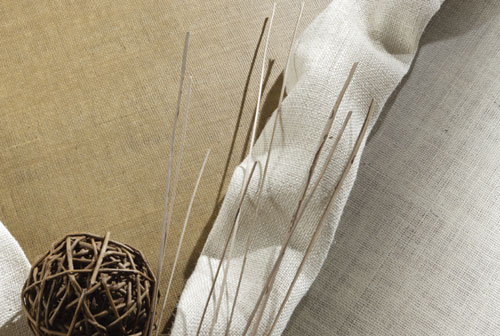 |
A burlap-textured, high-pressure laminate created originally for a chain of coffee shops was made by embedding a layer of jute textile between laminate layers. Photo courtesy of Lamin-Art |
Other textured laminate products use embedded natural banana fibers as an inclusion material; the plant, which only lives for one season, is dried, ground into fine particles, and recycled as the inclusion layer under a transparent sheet in the laminate sandwich. Again, the particulates of the ground-up leaves transfer to a subtle natural tactile finish; metal filings, coffee beans, and textiles have also been used.
Another unique laminate production method uses embossed papers that transfer photorealistic ticking, knots, and sap lines of an oak, ash, or cherry to the laminate surface during production. The hardened papers are used between press plates in the laminate production, often “in register” with the décor paper design. Some of these techniques can also include variations in gloss levels to enhance geometric or stone designs.
These advanced surface treatments and overlay technologies now play an important role in the design and “development of decorative surface materials, enhancing both the visual and tactile qualities of the products,” according to the Composite Panel Association, Leesburg, Virginia.1
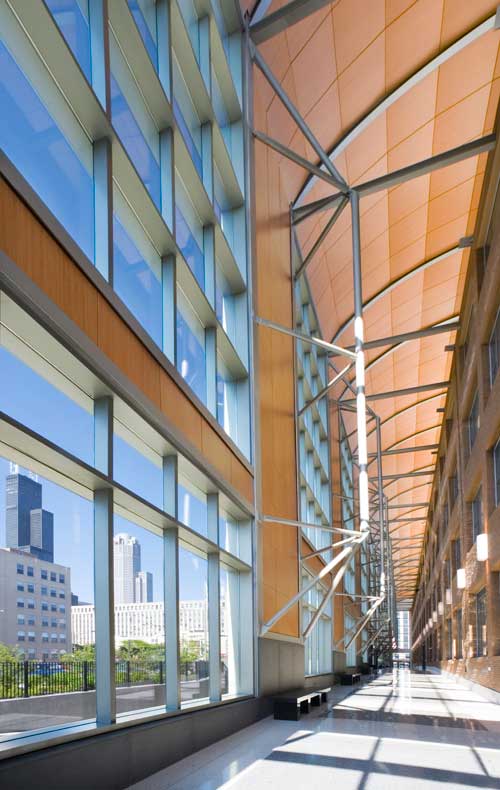 |
A high-performance wood veneer, in Honey Annigre, was used on the Cook County Court House, Chicago; The project was designed by Booth Hansen; Millwork by Lange Brothers Woodwork Co. Photo © 2007 Ballogg Photography, Chicago |
Benefits for Health and Environment
Texture in the finished material does more than just please the senses and provide for healthful, mood-elevating biophilia. There are additional, functional considerations. “Textured materials not only add a tactile element to design, but they can also help to disguise wear and tear on different products and surfaces,” says Marybeth Orlando, interior design director with The Architectural Team, a 60-person planning and design firm based in Chelsea, Massachusetts. “Textured glass in particular is extremely multifunctional. Uses range from stair treads to room dividers—the glass brings a translucent sparkle to the space, while still allowing light to penetrate and permeate the environment.”
 |
For the LEED Platinum “Hillside House” in Mill Valley, California, the firm SB Architects employed Western Red Cedar and cost-effective manufactured stone panels in a monochromatic palette. Photo courtesy of Eldorado Stone |
According to Parex USA's Makuuchi, some colored and textured finishes have added components that confer robust qualities to improve life-cycle performance or sustainability, often in unexpected ways. “One new acrylic finish and coating that can be used for EIFS has enhanced hydrophobic and photocatalytic properties, which means it is highly water repellent, heat reflective, and smog reducing. The formula reflects the sun's heat and ultraviolet (UV) rays, lowering surface temperatures and saving energy in a process known as a photocatalysis. Being hydrophobic helps clean building exterior surfaces with rain or other water sources. As water hits the finish, it simply beads off the exterior wall and takes any dirt or soil in its path with it, helping to keep buildings clean, dry, and aesthetically pleasing longer,” he explains.
Very different is photocatalysis, which also describes the acceleration of a photoreaction in the presence of a catalyst. The effect, which is similar to photosynthesis in plants, was discovered in 1967 at the University of Tokyo and has since been used for anti-fogging mirrors and soil-resistant tensile fabric structures. “The photocatalytic properties initiate an oxidation process that decomposes organic and inorganic pollutants—components of smog—in the environment,” says Makuuchi. “This allows sunlight to literally break down the smog molecules, creating a cleaner environment.”
More basic environmental benefits have resulted from the use of realistic faux finishes that imitate endangered resources, such as rare stones, woods, and even animal prints.
Notice
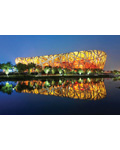
www.laminart.com
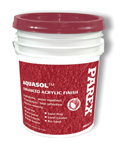
www.parex.com
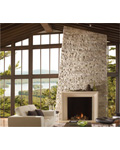
www.eldoradostone.com









